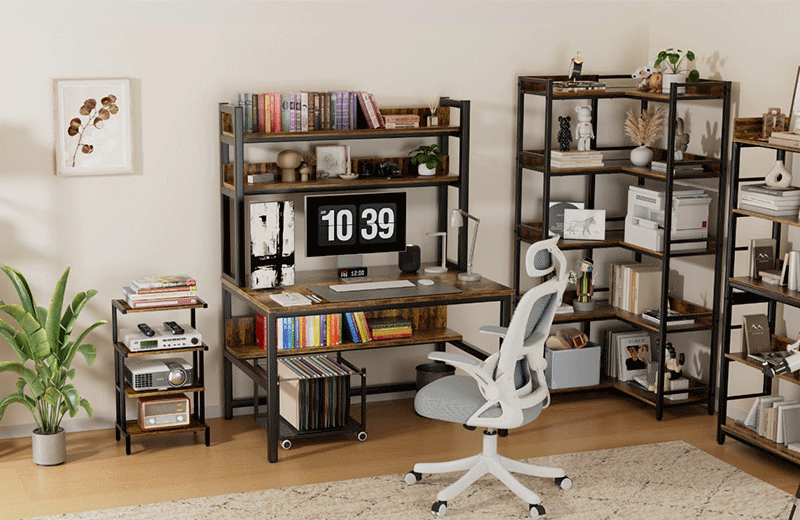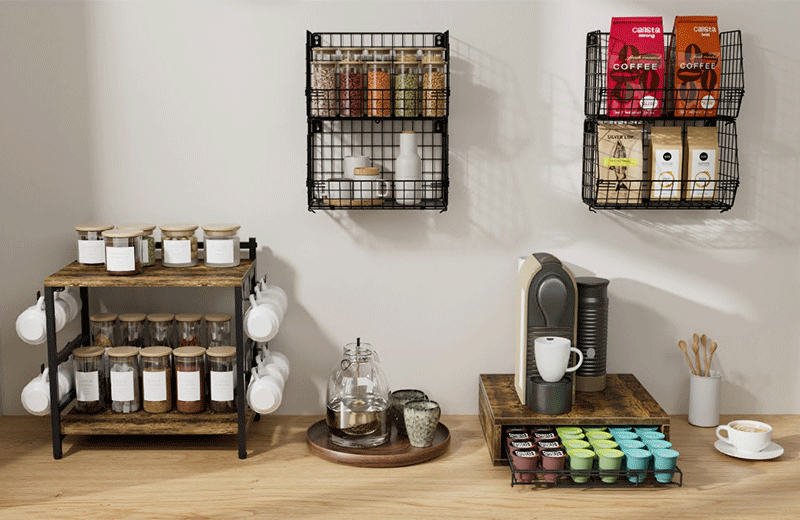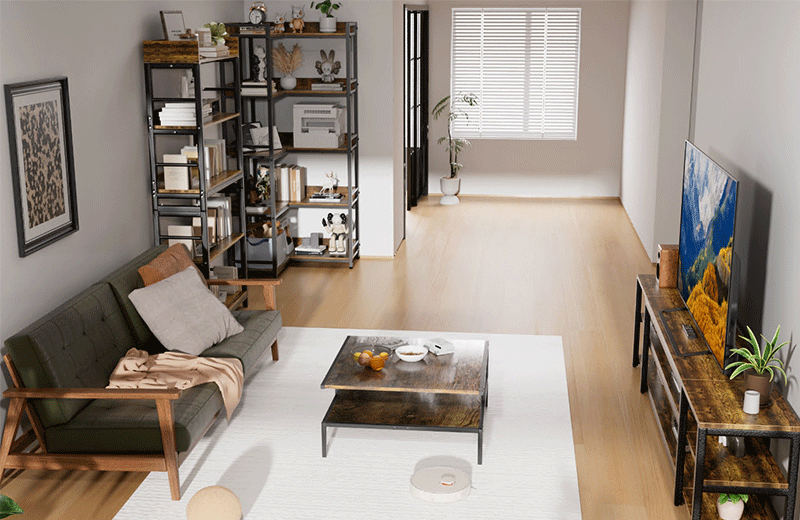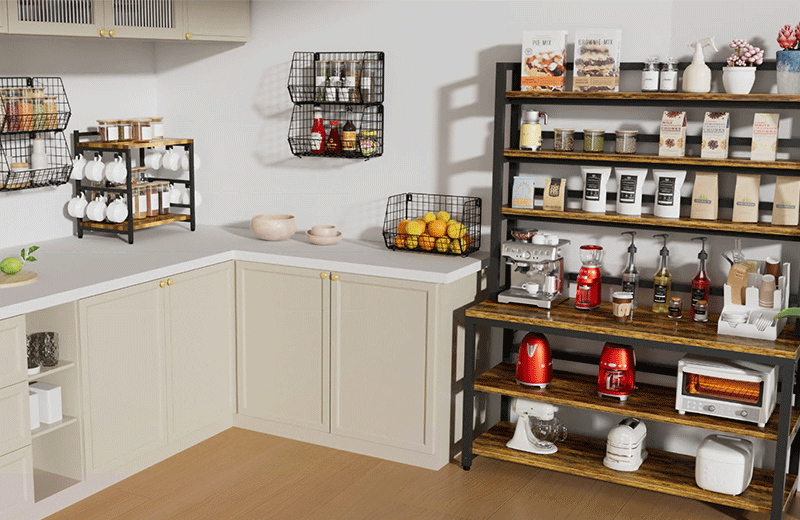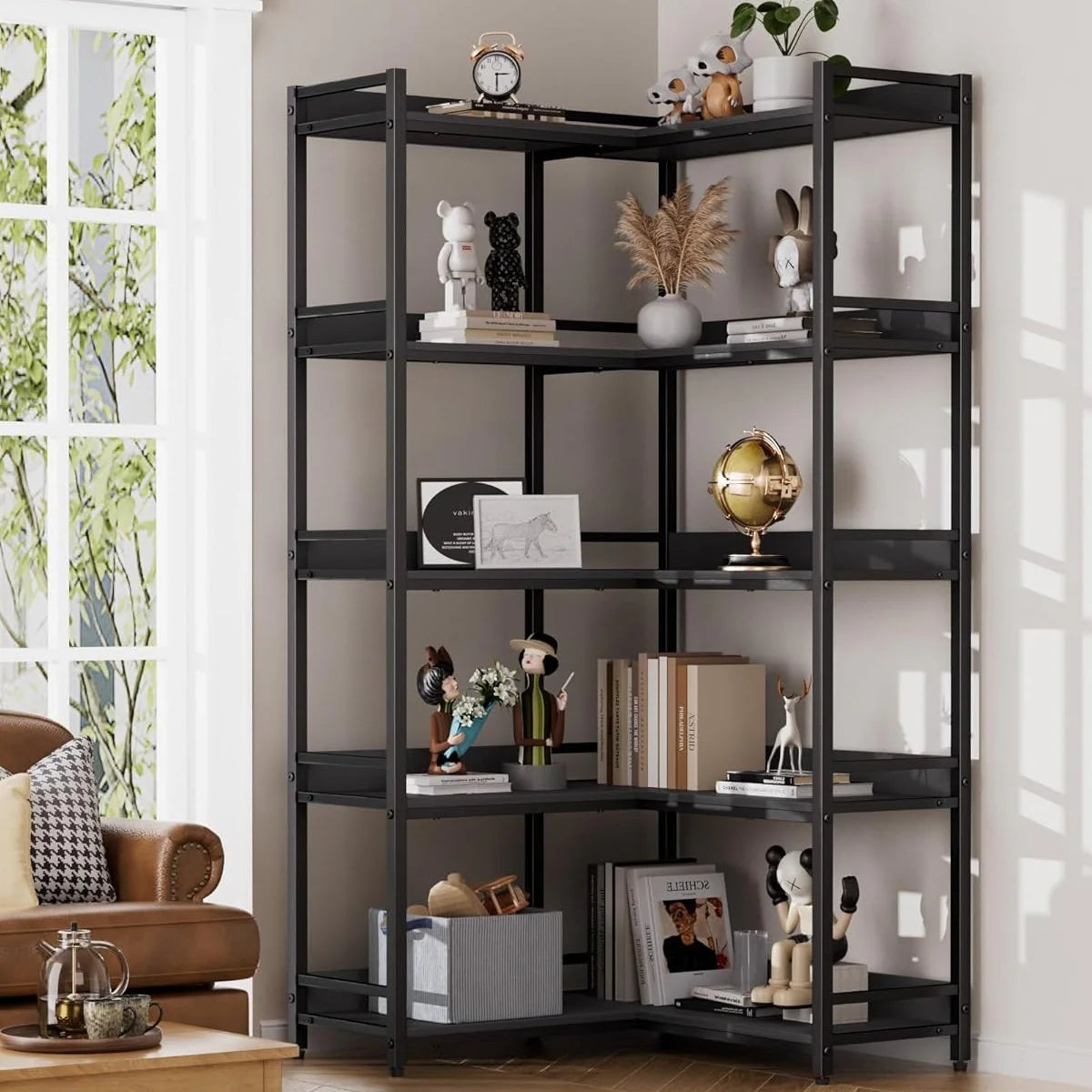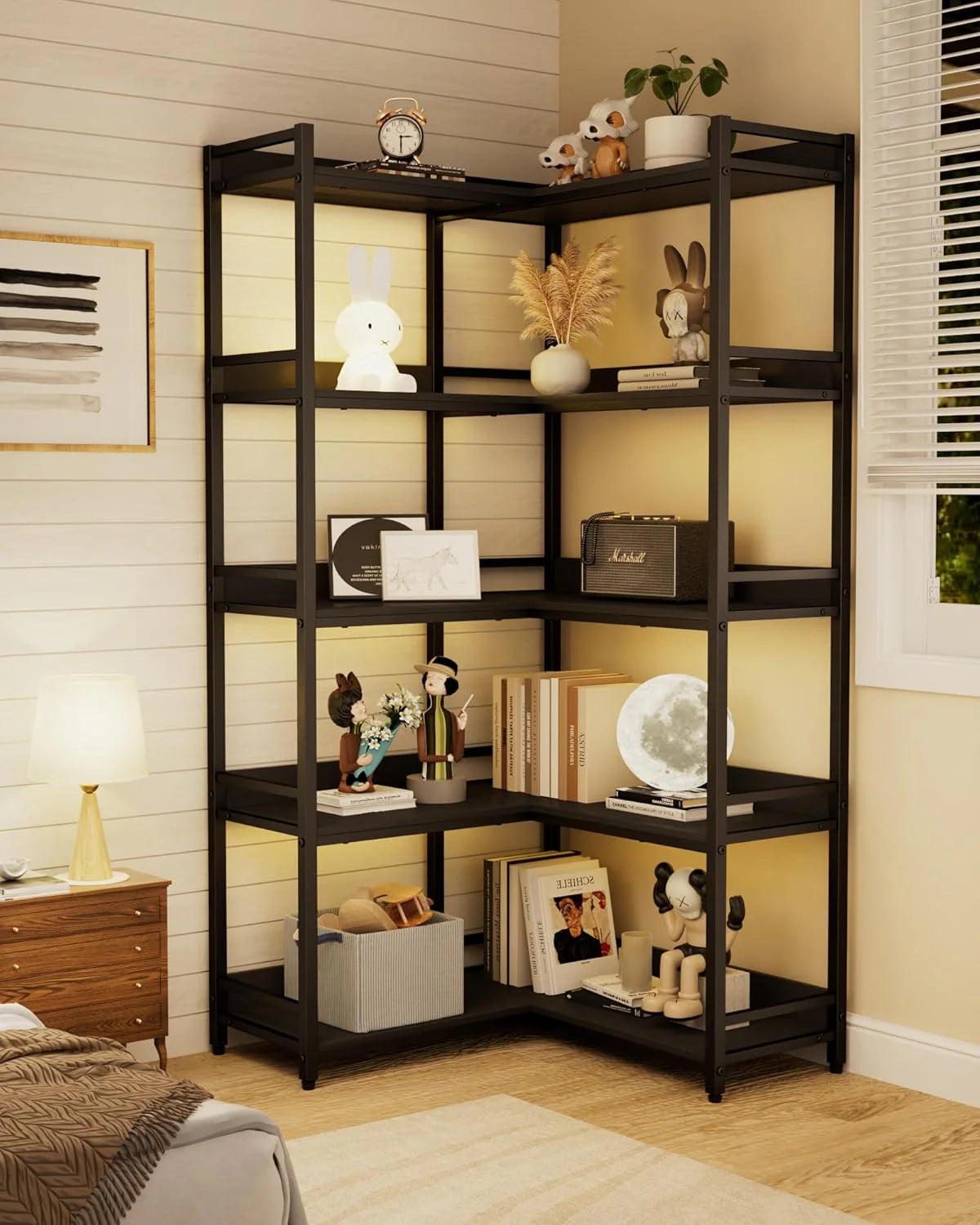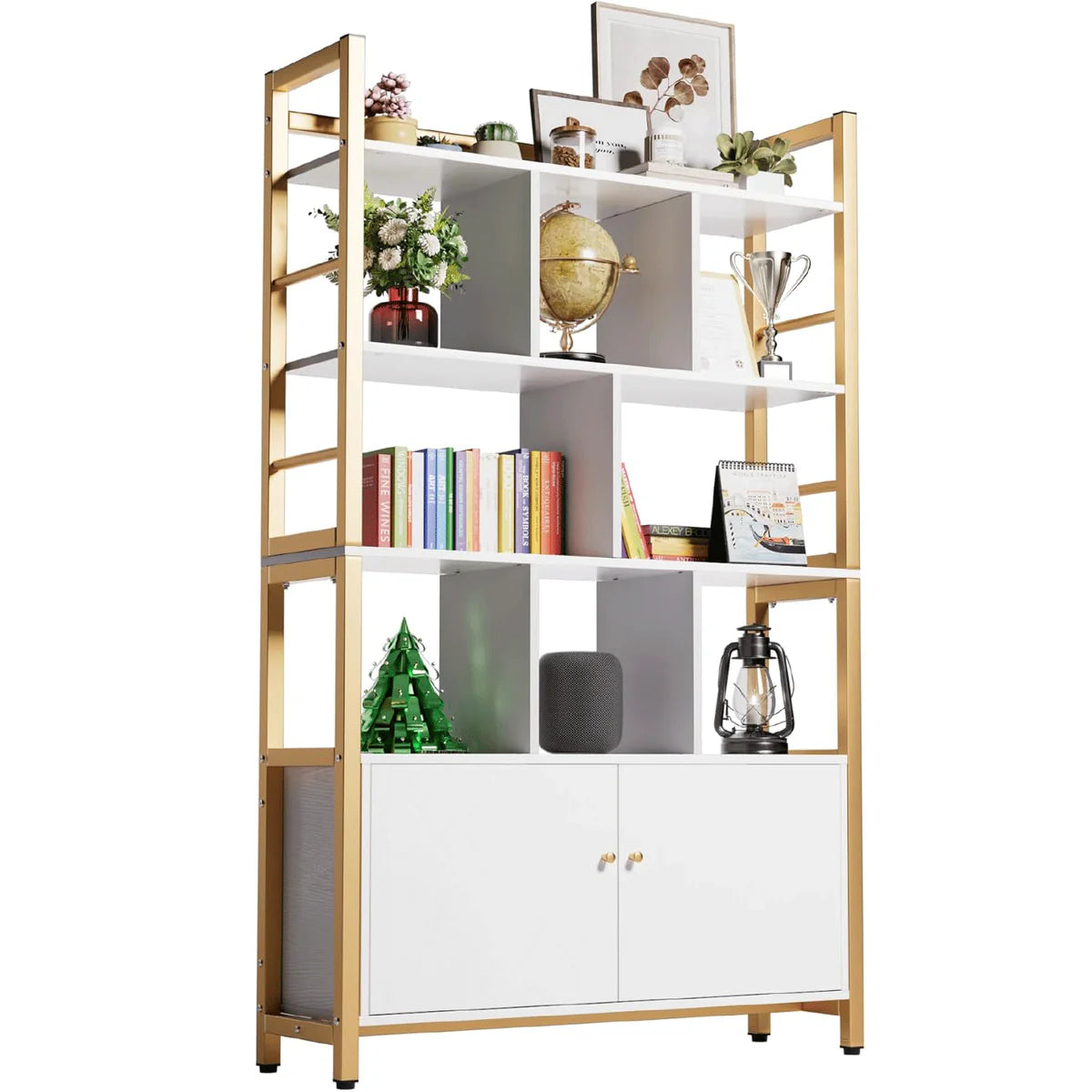A corner bookshelf is a fantastic addition to any home, offering a space-saving solution while adding both functionality and aesthetic appeal. However, these sleek, triangular structures can sometimes suffer from stability issues due to their unconventional shape and the weight distribution of the books and other items placed on them. If your corner bookshelf feels wobbly or you're concerned about it tipping over, don't worry – there are several effective methods to stabilize it. In this comprehensive guide, we'll explore various techniques to ensure your corner bookshelf stands firmly in place, keeping your beloved books and decor secure.
1. Assess the Structure and Placement
Before diving into stabilization techniques, it's crucial to assess the current state of your bookshelf. Start by examining the structure for any signs of damage, such as cracked wood, loose screws, or warped panels. These issues can compromise the stability of the bookshelf and should be addressed promptly.
Next, consider the placement of your corner bookshelf. Ideally, it should be positioned in a corner where the two adjacent walls are perpendicular and sturdy. Avoid placing it in corners with uneven or bowing walls, as this can exacerbate stability problems.
2. Secure to the Wall
One of the most effective ways to stabilize a corner bookshelf is to secure it to the wall. This method distributes the weight of the bookshelf and its contents more evenly, reducing the risk of tipping. Here's how you can do it:
- Locate Wall Studs: Use a stud finder to identify the locations of the wall studs. Securing the bookshelf to studs will provide the strongest support.
- Use Anchors: If your bookshelf doesn't come with built-in wall-mounting hardware, you'll need to purchase appropriate anchors for your wall type (drywall, plaster, or masonry).
- Attach Brackets: Install L-brackets or angle brackets at the top and bottom rear corners of the bookshelf, ensuring they are securely fastened to both the bookshelf and the wall studs.
- Tighten Screws: Use screws that are long enough to penetrate deeply into the wall studs but not so long that they emerge on the other side of the wall. Tighten the screws securely but avoid over-tightening, which could strip the screw holes.
3. Level and Adjust
Once your bookshelf is secured to the wall, use a level to ensure it's standing straight. Uneven surfaces can cause the bookshelf to lean, which can stress the joints and fasteners over time. If necessary, adjust the feet or use shims (thin wedges of wood or plastic) under the bookshelf's legs to achieve a perfectly level position.
4. Reinforce Internal Structure
If your corner bookshelf has a hollow or lightweight construction, reinforcing the internal structure can significantly improve its stability. Here are some reinforcement techniques:
- Add Cross-Bracing: Install diagonal braces or cross-supports inside the bookshelf to create a more rigid structure. These braces can be made from wood, metal, or plastic and should be securely fastened to the shelf frame.
- Use Shelf Supports: Ensure each shelf is supported adequately. If your bookshelf doesn't have built-in shelf supports, install adjustable shelf pins or brackets to prevent sagging.
- Upgrade Materials: If feasible, replace weaker materials with stronger ones. For instance, you could reinforce wooden shelves with metal brackets or replace hollow-core panels with solid wood.
5. Distribute Weight Evenly
The way you organize your books and other items on the shelf can also affect its stability. Here are some tips for optimal weight distribution:
- Heavy Items on Bottom: Place heavier books and items on the lower shelves to lower the center of gravity, making the bookshelf less likely to tip.
- Balance Loads: Distribute weight evenly across the shelves to avoid overloading any single area.
- Avoid Overloading: Respect the weight capacity of each shelf, as exceeding it can cause sagging and structural damage.
6. Use Anti-Tip Kits
Many modern furniture pieces, including bookshelves, come with anti-tip kits. These kits typically include brackets, straps, or wires designed to secure the furniture to the wall and prevent tipping. If your corner bookshelf didn't come with an anti-tip kit, you can purchase one separately at home improvement stores or online.
Installing an anti-tip kit is relatively straightforward:
- Attach the Bracket: Fasten the bracket to the back of the bookshelf at the bottom.
- Secure to Wall: Use screws to attach the other end of the bracket to the wall, ensuring it's anchored to a wall stud.
- Tighten and Test: Tighten all screws securely and test the stability of the bookshelf by gently pushing it from various angles.
7. Regular Maintenance and Checks
Stabilizing your corner bookshelf is not a one-time task but rather a part of ongoing maintenance. Regularly inspect the bookshelf for signs of wear and tear, such as loose screws, cracked wood, or worn-out hinges. Promptly address any issues you find to prevent them from escalating into larger problems.
Additionally, periodically check the wall anchors and brackets to ensure they are still secure. Over time, the wall material or anchors can degrade, reducing their effectiveness. If you notice any松动或损坏, replace the anchors and tighten the screws as needed.
8. Creative Solutions for Unique Situations
If your corner bookshelf is particularly large, heavy, or custom-made, you might need to employ more creative stabilization techniques. For instance, consider adding additional wall anchors or using a combination of braces, straps, and brackets to create a more complex support system. In some cases, consulting a professional carpenter or structural engineer may be necessary to devise a custom stabilization solution.
Conclusion
Stabilizing a corner bookshelf doesn't have to be a daunting task. By following the steps outlined above – assessing the structure, securing to the wall, leveling and adjusting, reinforcing the internal structure, distributing weight evenly, using anti-tip kits, and performing regular maintenance – you can ensure your bookshelf remains stable and secure. Remember, safety is paramount, especially when dealing with heavy furniture and valuable items. Take your time, be meticulous, and enjoy the peace of mind that comes with a sturdy, stable corner bookshelf.

